Combat aircraft. Small and harmful, but very useful
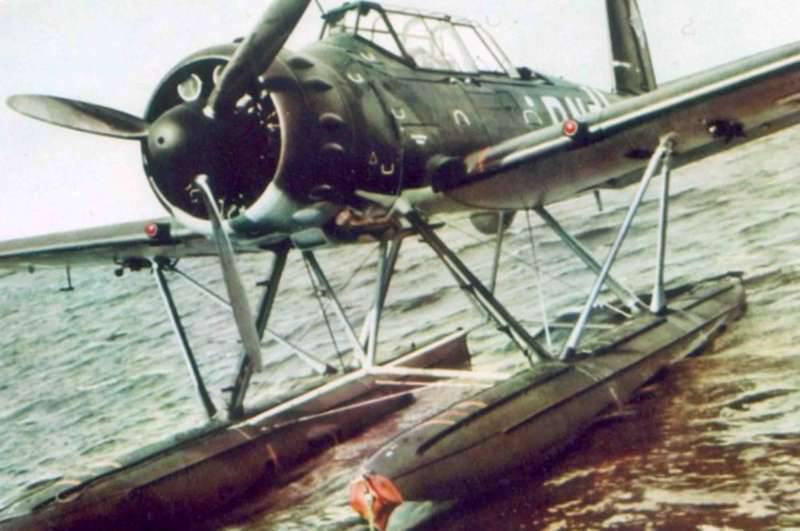
This is not to say that it was a masterpiece like an airplane. It cannot be said that it was a hydraulic device. But here we have such a golden mean, especially in comparison with others, and really golden mean. Even the middle.
And our today's hero was a rather interesting phenomenon in the world of seaplanes. But we'll talk about this a little below, but for now it's worth saying a few words about why it was needed in general.
In the 30s of the last century in all fleets with varying degrees of success, attempts were made to create such a thing as a radar, a locator, a radar. You can call it whatever you like, in fact it turned out to create a radar station, which, in fact, sentenced reconnaissance seaplanes as a class.
But while the work was going on, every large ship (from a light cruiser and above) was equipped with what? That's right, catapult and seaplanes.
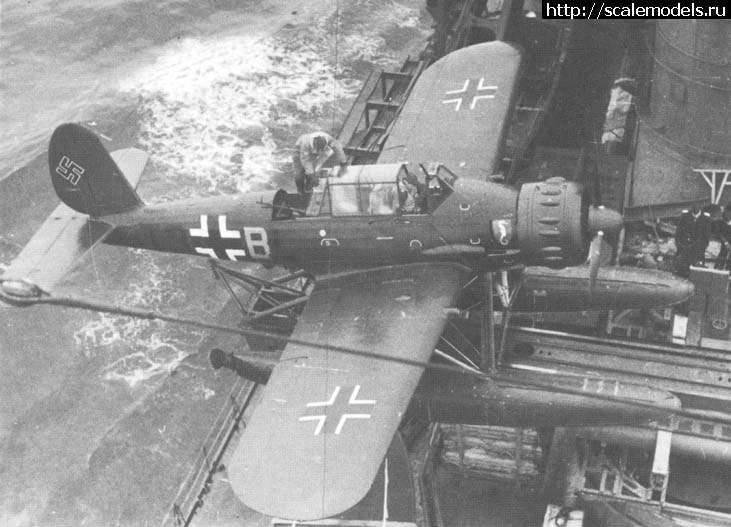
This was the only useful intelligence concept at the time. The plane, which rose even a kilometer, greatly facilitated the work of observers to find the enemy. In general, the aircraft in the navy (we do not take aircraft carriers) was viewed in this way - as a universal means of reconnaissance.
Accordingly, it should have been a small plane, but with a decent flight time. The crew had to detect the enemy, contact their ships, point them at the enemies, and then adjust the artillery fire on the enemy.
Naturally, the plane had to somehow protect itself in the event of opposition aviation enemy, it is quite natural that the enemy on the ships had absolutely similar aircraft. With the same tasks.
This is how a separate class of seaplanes appeared - ejection wagons. They could be scouts, spotters, some could even destroy another plane or torture a submarine with bombs.
They were supposed to take off from a catapult, and after completing the task, they would splash down next to the carrier ship and wait until the plane was lifted aboard the ship.
Our hero could do anything. Unlike many of his classmates. And this made it, perhaps, the best aircraft in its class.
But the Germans generally did not look for easy ways, but went their own way. As a result, they sometimes came where no one else could reach. And sometimes they got something not entirely clear. But our case is from the first folder.
In general, the path of the German ejection aircraft went a peculiar way.
The first catapult with a claim to long service was born Heinkel Ne.60.
It was a biplane that can be considered an attempt to combine friendship with water and air. In fact, no, the He.60 flew very below average in terms of speed and range, it was very difficult to control and, most importantly, unstable in the air.
Friendship also did not work out with water. The hydro attachment stubbornly peeled off and sank, dragging the plane along. In general, the aircraft did not have any advantages, except, perhaps, the fact that the enemy could hardly capture it. The Heinkel sank very quickly with the slightest excitement.
In general, in the Kriegsmarine for some reason they wanted a reusable seaplane.
Heinkel built the plane, but He.114 also "did not enter".
It flew only 30 km / h faster than its predecessor, and managed in much the same way. The armament also consisted of a defensive MG.15 machine gun and two bombs of 50 kg each.
And then the Ministry of Aviation (we are not surprised, by that time Goering had scooped up everything that was flying) announced a competition. To fill the vacant position of a catapult aircraft on all ships of the Kriegsmarine.
The companies Arado, Dornier, Focke-Wulf and Gotha presented their projects. The offended Heinkels did not participate.
And in the end the aircraft of the "Arado" company won. The naval officers were overjoyed and ordered four aircraft to be tested. True, the success was slightly spoiled by the opinion of the old conservatives in the naval ministry, who believed that the ejection plane simply had to be a biplane.
Therefore, they took and built a couple of biplanes from the Focke-Wulf, FW-62. It's just that no one offered more biplanes.
Tests of two machines showed a huge advantage of the Arado aircraft, and it went into series. He was faster, more maneuverable, "hung" longer, and most importantly - was just a godsend in terms of weapons.
We will begin to discuss and compare the seaplanes of that war in bulk in the very near future, but now it is worth mentioning that the Ar.196 had no competitors in its class in terms of weapons. Small aircraft, where the weight went to strengthen the structure, for the sake of the duration and range of flight, sacrificed primarily weapons.
And the "Arado" turned out to be a rather creepy monster, whose armament consisted of two 20-mm MG-FF cannons and an MG.17 machine gun, which was installed to the right of the engine in the nose. Plus the MG.15 machine gun, which defended the aircraft in the rear sector. Plus two SC 50 bombs, 50 kg each.
In general, this "small catapult reconnaissance aircraft" could easily pile on any fighter of that time in terms of the force of a salvo. In 1937 he looked very ... impressive in terms of performance characteristics. Yes, speed was not his strong point, so you could just get away from this plane, but if he caught up, that's where the problems really started.
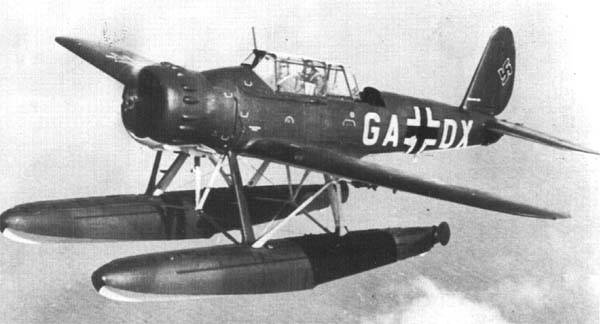
The ammunition load was very serious. 120 rounds for each cannon, 500 rounds for a machine gun, 525 for defensive.
The first serial Ar.196A-0 (10 pcs.) Were produced without nodes for launching from a catapult, so they went to reconnaissance units of the Luftwaffe in Wilhelmshaven and Kiel. And already the second series, Ar.196A-1, which consisted of 20 vehicles, has already gone directly to the ships. The planes were equipped with the necessary devices for taking off from catapults.
The first ship on which Ar.196 entered service was the raider "Admiral Graf Spee".
Next, the new seaplanes were received by the heavy cruiser "Deutschland". Then came the turn of the battleships "Scharnhorst" and "Gneisenau", the heavy cruisers "Admiral Scheer", "Admiral Hipper" and "Prince Eugen".
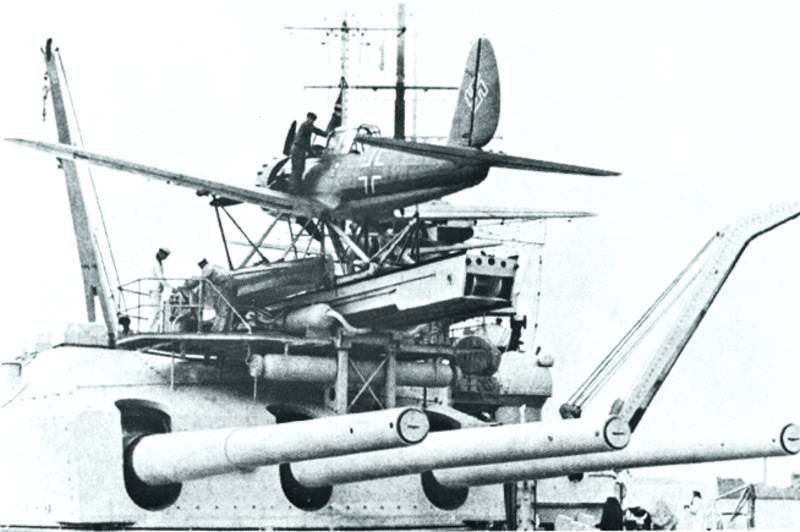
The last aircraft received were the battleships Tirpitz and Bismarck.
"Bismarck" and "Tirpitz" received 6 aircraft each.
Scharnhorst and Gneisenau - 4 units each.
Heavy cruisers such as "Deutschland" and "Hipper" - 2 aircraft each.
By that time, the aircraft of the first series had already been flown and were highly appreciated by the pilots. And the coastal patrol service ordered more planes at maximum armory complete set. And she was right.
Ar.196A-2, caught in the coastal defense units, regularly patrolled the waters of the North Sea. And on May 5, 1940, an epoch-making incident occurred when two Ar.196A-2s seized Her Majesty's submarine "Seal". The submarine laid mines in the Kattegat Strait, but ran into its own mine (God marks rogue sometimes) and was forced to surface. Here she was found by two patrol "Arado", who immediately began to treat the boat with bombs and shells.
The British chose to surrender.
Catapult aircraft also performed their tasks quite normally. All 11 ships, which were sunk in his only cruise "Admiral Graf Spee", were discovered precisely with the help of scouts "Arado".
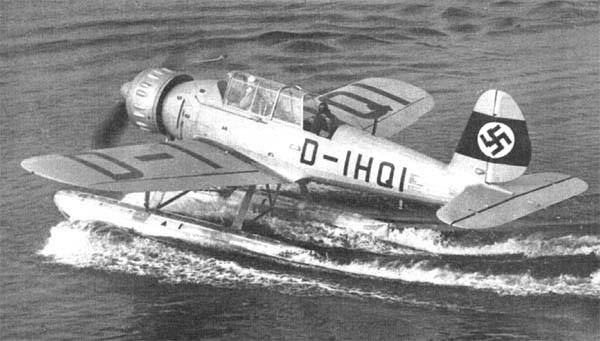
And how not to recall the epic sinking of Operation Wonderland, when, due to the fact that both aircraft on the Admiral Scheer were out of order, the Germans missed an almost unarmed, but very important (for us) convoy.
Seaplane pilots from the Bismarck tried to intercept the scout Catalina, which had discovered the battleship and cruiser Prince Eugen. However, "Catalina" managed to get away, since the speed was actually equal to the speed of "Arado". And two days later, the Bismarck was sunk.
Throughout 1941, the Coast Guard seaplanes based in the Bay of Biscay fought constant battles with the British. It turned out to be a kind of circulation: the British "Whitleys" and (since 1942) "Wellingtons" hunted for German submarines. Arado intercepted British patrol planes and made life difficult for them. As the British “Beaufighters” and “Mosquito” appeared, the crews of “Arado” began to have problems. The 190s Focke-Wulfs had to be allocated to escort the scouts.
The circle was opened only after the defeat of the Germans, but more than a dozen aircraft rested in the coastal waters.
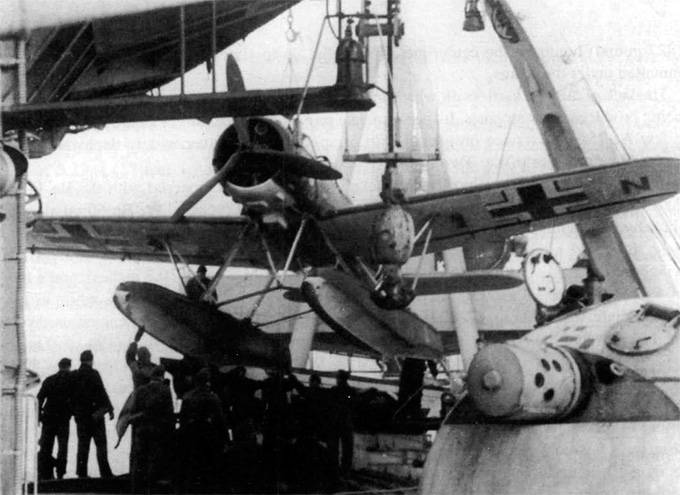
Arado Аr.196А-4 was noted from the heavy cruisers Lutzov and Prince Eugen on the Eastern Front, adjusting the firing from the cruisers at the advancing Soviet troops in the Baltic.
In addition to "normal" warships, Ar.196A, primarily due to its compactness, were registered on the decks of the auxiliary cruisers Orion, Komet, Atlantis, Tor, and Mikhel. And, accordingly, they performed the functions of reconnaissance aircraft for the raiders of the Third Reich.
In general, the Ar-196A turned out to be an extremely balanced aircraft, so it was used on all ships, from a battleship to an auxiliary cruiser converted from a civilian ship.
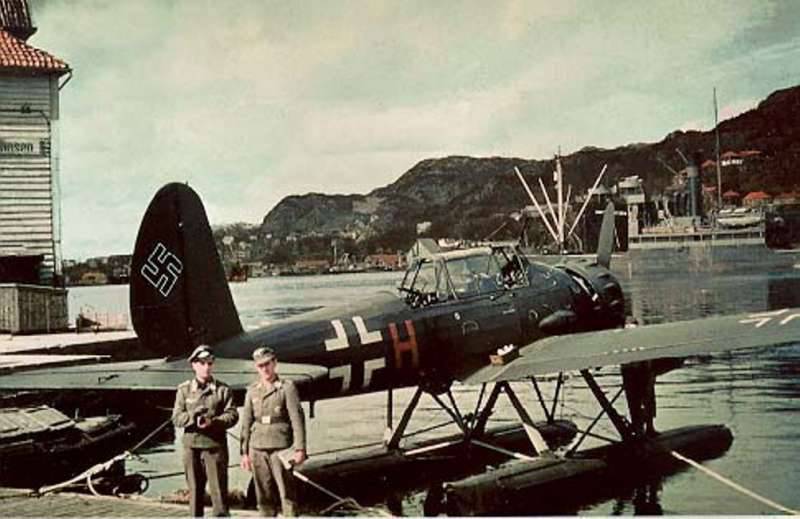
The Ar.196A became the last and most widespread Luftwaffe float aircraft. Only 526 aircraft were produced, but given its narrow specialization, the figure is quite decent. For comparison, the KOR-1 / Be-2, a similar aircraft in the USSR Navy, was produced in a series of 13 aircraft.
But "Arado" could be found anywhere, in the entire theater of operations of the Second World War. Atlantic, North Sea, Baltic, Mediterranean and Black Seas. Even in the East, in the Malaysian Penang, there was an "East Asian department", which was supposed to provide assistance and support to raiders and submarines of Germany. The department had two Ar.196A aircraft at its disposal.
In general, Ar.196A received the nickname "Eyes of the Kriegsmarine" for a reason. The appearance of this aircraft over an allied convoy anywhere in the oceans could mean only one thing: trouble begins in full. And we must wait for an attack in the very near future.
The fact that virtually unchanged the plane served the entire war is evidence of a lot. First of all, about the successful design of the car.
It is clear that in the second half of the war, starting in 1944, the Ar.196A became obsolete. Fighters of all countries have stepped too far, and the widespread development of radars by countries and the construction of aircraft carriers simply brought the Ar.196A to the bottom.
The advent of radar and aircraft carriers put an end to the very concept of the combat use of hydroplanes. Any, the most seedy aircraft, launched from an aircraft carrier, in its characteristics utterly surpassed the small seaplanes of the ejection launch.
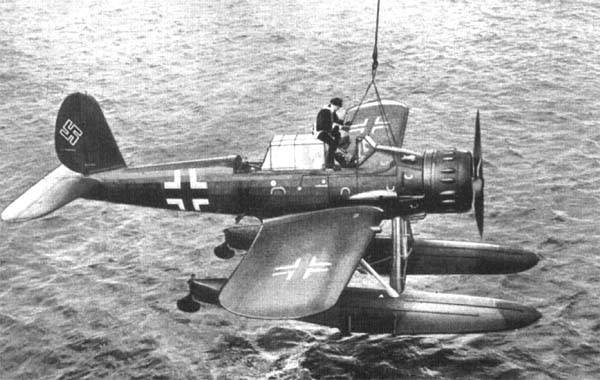
The seaplane has ceased to be relevant at all. And Ar.196A was no exception. But it was a very outstanding and useful aircraft, primarily as a reconnaissance aircraft.
By the way, on the basis of Ar.196 at the beginning of the work, a sports seaplane was created for the Schneider Cup races. But, having seen what kind of flight characteristics the new scout has, the Luftwaffe decided not to release the sports aircraft for races, so as not to declassify the data of the new naval scout.
LTH Ar.196A-3:
Wingspan, m: 12,44.
Length, m: 10,96.
Height, m: 4,45.
Wing Area, m2: 28,30.
Weight, kg:
- empty aircraft: 2 335;
- normal takeoff: 3 303.
Engine: 1 х ВМW-132К х 960 HP
Maximum speed, km / h: 320.
Cruising speed, km / h: 268.
Practical range, km: 800.
Maximum rate of climb, m / min: 415.
Practical ceiling, m: 7 000.
Crew, person: 2.
Armament:
- two wing-mounted 20 mm MG-FF cannons (120 rounds per barrel);
- one synchronous 7,9 mm MG-17 machine gun (500 rounds);
- one 7,9 mm MG-15 machine gun on a mobile installation (525 rounds);
- two 50-kg bombs on ETS-50 wing suspensions.
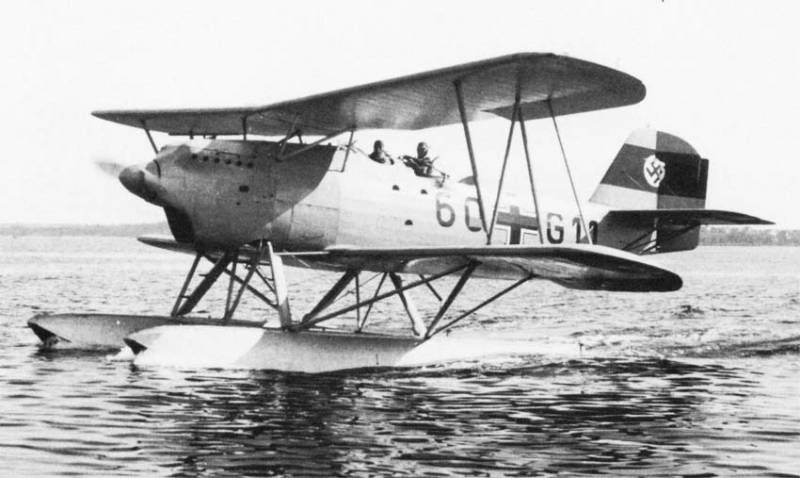
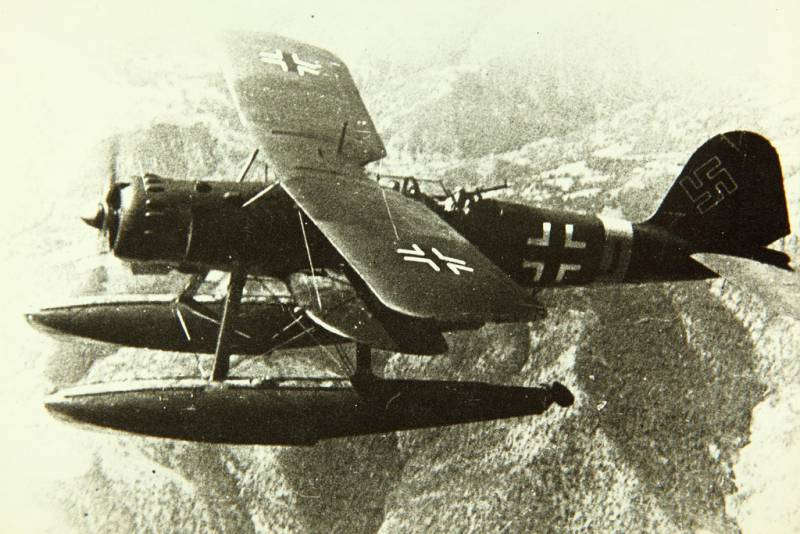
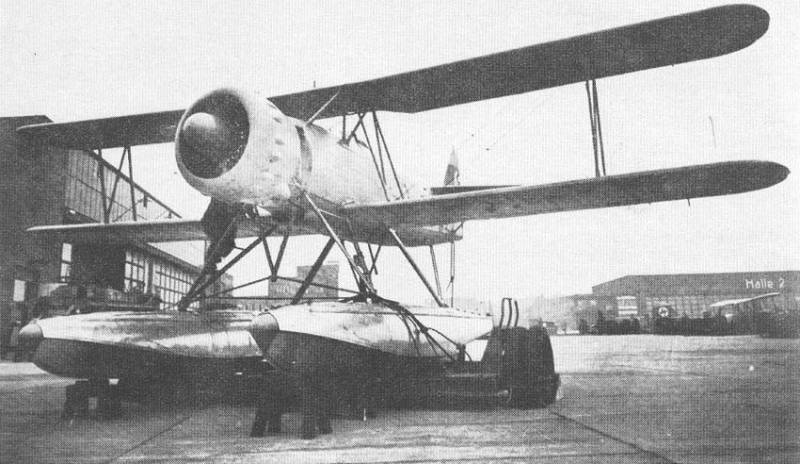
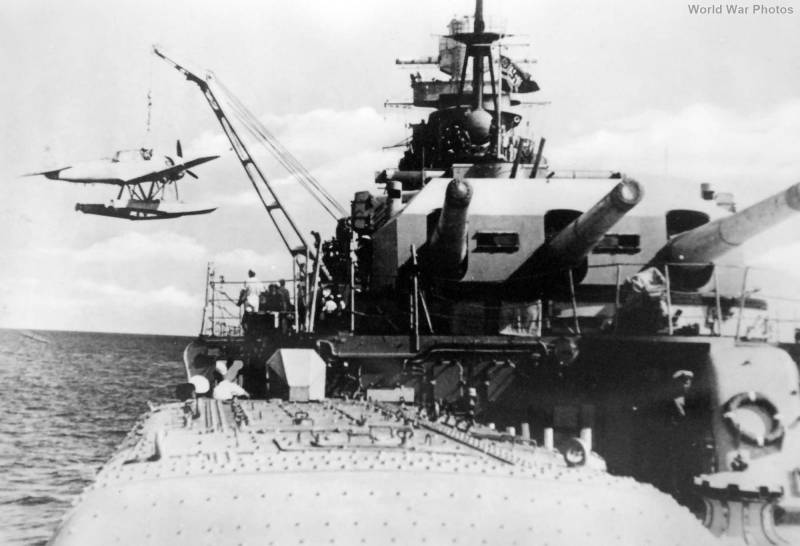
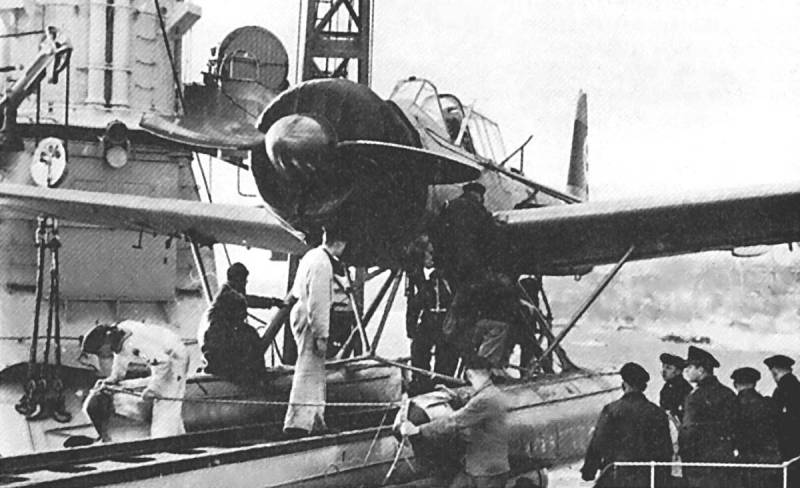
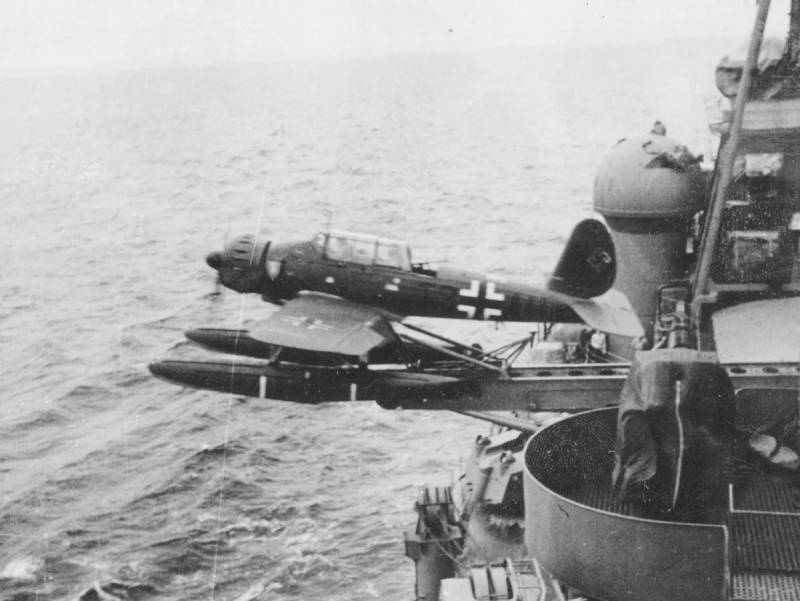
Information